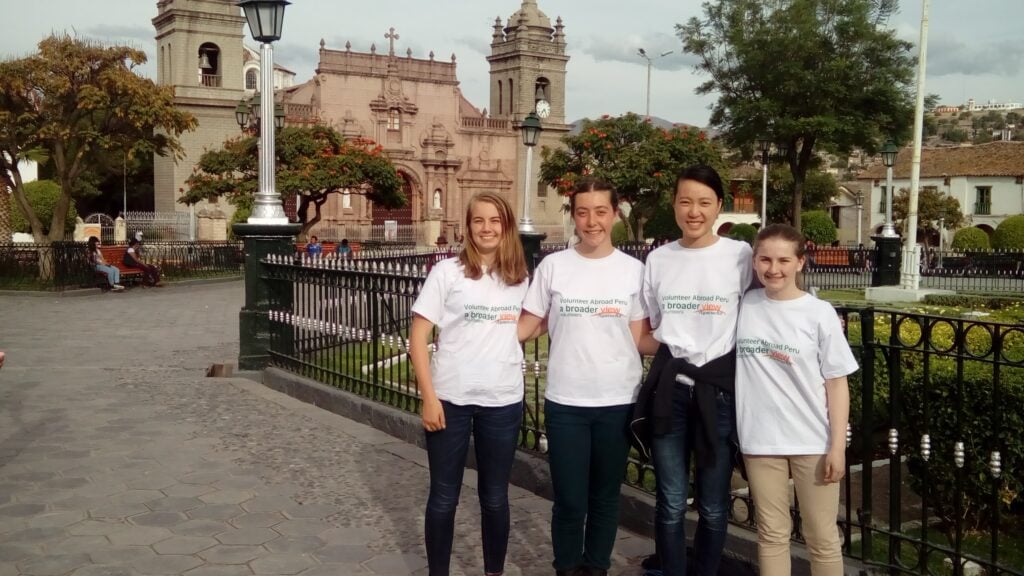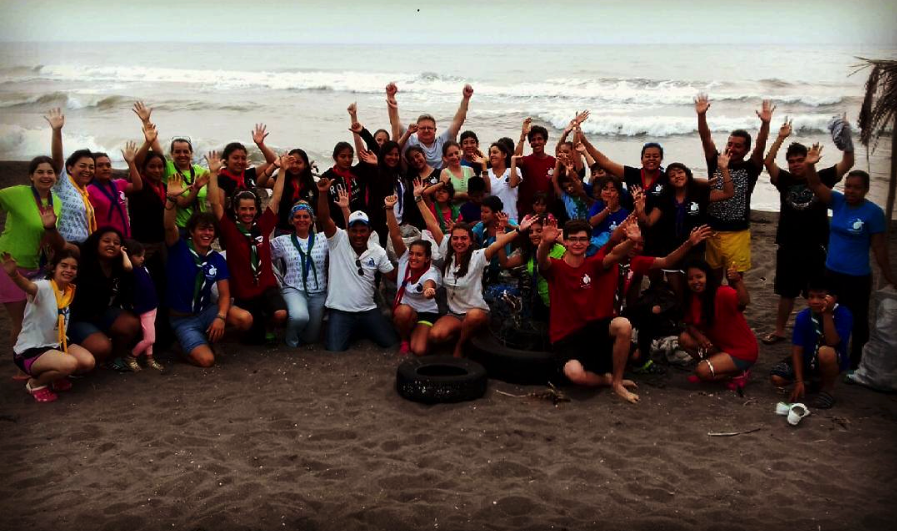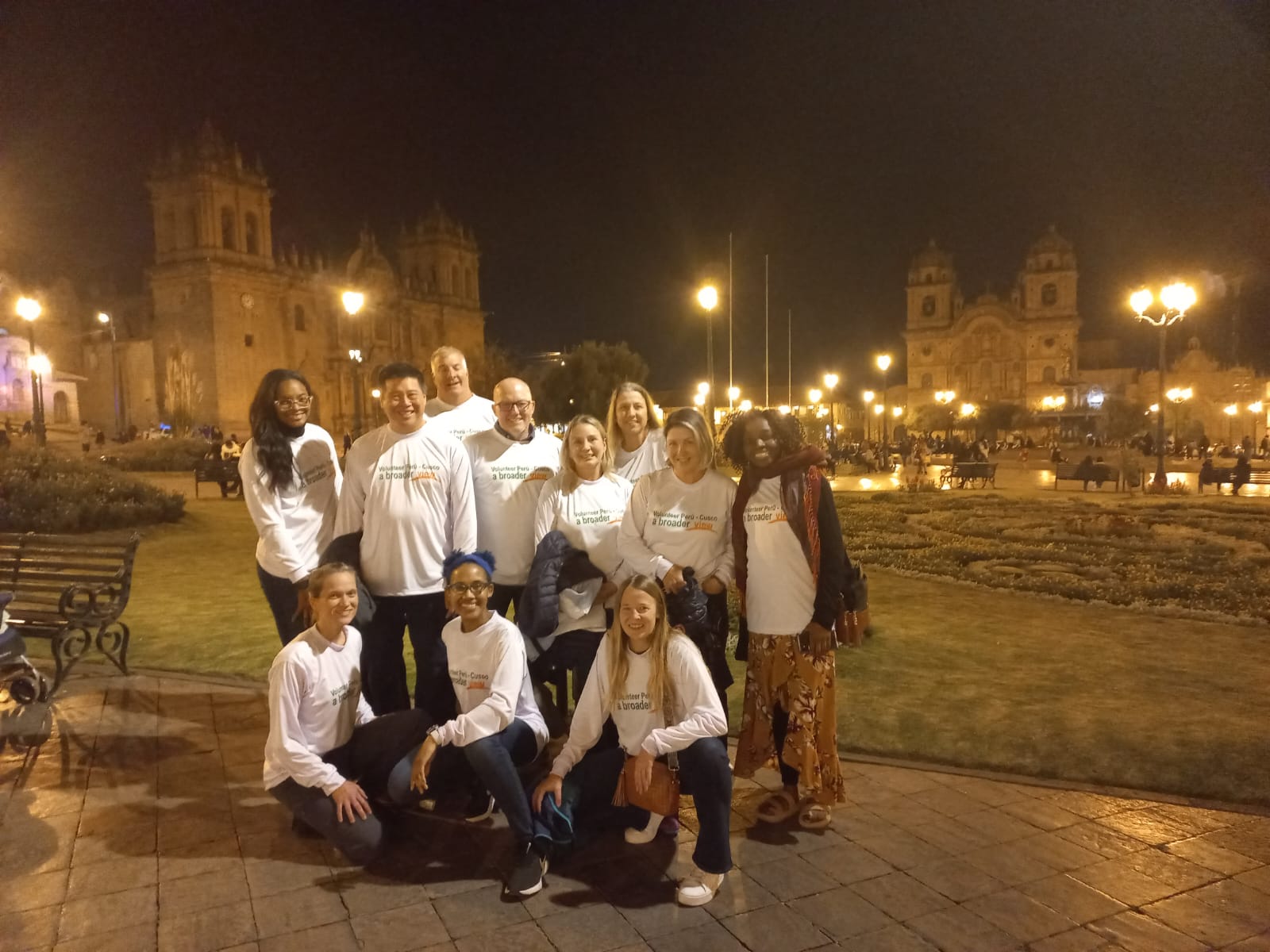Volunteering abroad is an incredibly rewarding experience. It allows you to immerse yourself in a different culture, make a positive impact, and gain a broader understanding of the world. However, it’s essential to remember that effective cross-cultural communication is paramount in ensuring a successful and respectful experience while volunteering.
Communication is the key to connecting with people from different backgrounds, understanding their perspectives, and building meaningful relationships. Whether you are teaching English, working on community projects, or providing healthcare assistance, being able to communicate effectively with the local community is crucial.
In this article, we will explore the fundamental principles of successful cross-cultural communication while volunteering. We’ll provide you with valuable insights and practical tips to navigate cultural differences, overcome language barriers, adapt to local customs, and build trust and respect with the people you work with.

So, let’s dive in and discover how you can enhance your intercultural communication skills to create a positive impact and forge deeper connections during your volunteering journey.
Understanding Cultural Differences
When volunteering in a cross-cultural environment, it is essential to have an understanding of the cultural differences that may exist. These differences can influence how people communicate and interact with one another. By recognizing and respecting these differences, you can foster positive relationships and create a more inclusive and effective volunteering experience.
Here are some key aspects to consider when it comes to understanding cultural differences:
Values and Beliefs
Different cultures have unique sets of values and beliefs that shape their behavior and attitudes. It is important to recognize that what may be considered acceptable or appropriate in your own culture may not be the same in the host culture. Some cultures may prioritize collectivism and community harmony, while others may emphasize individualism and personal achievement. By understanding these differences, you can better navigate and adapt to the cultural context in which you are volunteering.
Communication Styles
Communication styles can vary greatly across cultures. Some cultures may value direct and assertive communication, while others may value indirect and harmonious communication. It is important to be aware of these differences and adjust your communication style accordingly. Be attentive to verbal cues and nonverbal cues, such as gestures and facial expressions, as they may convey different meanings in different cultures.
Nonverbal Communication
Nonverbal communication plays a significant role in cross-cultural interactions. It includes body language, facial expressions, eye contact, and personal space. It is important to understand that these nonverbal cues can have different meanings in different cultures. For example, a gesture that is considered polite in one culture may be offensive in another. By being aware of these differences, you can avoid misunderstandings and communicate more effectively.

Remember, understanding cultural differences is the first step towards successful cross-cultural communication while volunteering. By being aware of values and beliefs, communication styles, and nonverbal communication, you can create a more inclusive environment that respects and appreciates diverse cultural perspectives.
Active Listening and Empathy
When it comes to successful cross-cultural communication while volunteering, active listening and empathy play a crucial role. These skills not only help foster understanding and connection but also demonstrate respect and openness towards different perspectives. Here are some key tips for actively listening and practicing empathy:
Respecting Different Perspectives
One of the fundamental aspects of cross-cultural communication is acknowledging that different cultures have diverse perspectives and ways of thinking. It’s important to approach conversations with an open mind and a willingness to consider alternative viewpoints. By respecting and valuing these differences, you can create an environment that encourages dialogue and understanding.
Being Open-Minded
Active listening requires more than just hearing what someone is saying. It involves being receptive to different ideas and opinions, even if they challenge your own beliefs or assumptions. Instead of immediately dismissing or invalidating someone’s perspective, try to approach the conversation with curiosity and a desire to learn. Remember, personal growth comes from embracing new ideas.

Practicing Empathy
Empathy involves understanding and sharing the feelings of others. While volunteering in a different culture, it’s essential to put yourself in the shoes of the people you’re interacting with. By attempting to understand their experiences, challenges, and emotions, you can develop a deeper connection and build trust.
To practice empathy:
- Listen without judgment: Avoid jumping to conclusions or making assumptions about someone’s background or values. Give them a chance to express themselves without interruption or judgment.
- Validate emotions: Acknowledge and validate the emotions articulated by others. This shows that you are listening and that their feelings are important to you.
- Ask thoughtful questions: Ask open-ended questions to encourage the person to share more about their experiences and perspectives. This demonstrates your genuine interest and willingness to understand.
By actively listening and practicing empathy, you can bridge cultural gaps, build meaningful connections, and create a more inclusive and welcoming environment for everyone involved in the volunteering experience.
Overcoming Language Barriers
Communication is a fundamental aspect of human interaction, but when you find yourself in a foreign country volunteering, language can become a significant barrier. However, with the right approach and some helpful techniques, you can overcome these language barriers and effectively communicate with local communities. Here are some strategies to help you navigate these challenges:
Learning Basic Phrases
- Start with the basics: Learning a few essential phrases in the local language shows respect and will go a long way in establishing rapport with the locals. Simple greetings, thank yous, and common words related to your volunteering activities can bridge the communication gap.
- Practice pronunciation: While it may not be possible to become fluent in a new language overnight, focusing on pronouncing words correctly will enhance your ability to be understood. Don’t worry about making mistakes; locals will appreciate your efforts.
Using Translation Tools
- Leverage technology: In today’s digital age, translation apps and tools are readily available on smartphones that can help with on-the-spot translations. These apps can translate conversations in real-time, making it easier for you to communicate with locals.
- Prepare in advance: If you know beforehand what specific terms or phrases you may need, consider creating a mini dictionary or phrasebook. Having these resources on hand can be invaluable during your interactions.
Nonverbal Communication Techniques
- Use gestures: Nonverbal cues such as pointing, nodding, or even miming can help bridge the communication gap. Keep in mind that certain gestures may have different meanings in different cultures, so be mindful and observe the locals to understand their nonverbal cues.
- Pay attention to body language: Communication is not just about the words we use; it also includes body language. Be aware of your own body language and observe the locals to better understand their intentions and emotions.
Remember, while language can be a barrier, it is not an insurmountable obstacle. The key is to approach communication with an open mind and a willingness to learn and adapt. By making an effort to learn basic phrases, using translation tools when needed, and being aware of nonverbal communication cues, you can effectively overcome language barriers and connect with the local community during your volunteering experience.
Adapting to Local Customs and Etiquette
When volunteering in a different culture, it’s essential to adapt to local customs and etiquette to show respect and avoid unintentionally offending anyone. By taking the time to understand and observe the customs of the community you’re working with, you can ensure a more positive and meaningful experience for both yourself and the people you’re serving. Here are some tips on how to adapt to local customs and etiquette while volunteering:

Researching Local Customs Beforehand
Before embarking on your volunteering journey, it’s a good idea to research the customs and traditions of the community you’ll be working with. This will give you a basic understanding of their cultural norms and help you avoid any major faux pas. Look into topics such as greetings, gestures, dress code, table manners, and gender roles. Understanding these aspects in advance will give you a head start in adapting to the local culture.
Observing and Learning
Once you arrive in the community, take the time to observe and learn from the locals. Watch how they interact with each other, how they dress, and how they conduct themselves in various situations. Pay attention to the small details, as they can often convey important cultural meaning. By observing and learning, you’ll gain insight into the customs and etiquette of the community, and you’ll be better equipped to navigate social interactions.
Showing Respect and Courtesy
One of the most important aspects of adapting to local customs and etiquette is showing respect and courtesy towards the people you’re serving. This can be demonstrated through your behavior, language, and attitude. Here are a few ways to show respect and courtesy:
- Use appropriate greetings: Learn the proper way to greet people in the local community. Handshakes, bows, or even simple nods may be preferred over hugs or kisses, depending on the culture.
- Dress modestly: Dressing modestly shows respect for local customs and traditions. Be mindful of the way the locals dress and aim to dress similarly to avoid standing out or causing offense.
- Be mindful of personal space: Different cultures have different norms when it comes to personal space. Respect people’s boundaries and be conscious of the appropriate distance to maintain during conversations and interactions.
- Use polite language: Be aware of the local language customs and use polite phrases and expressions. Learning a few basic phrases in the local language can go a long way in showing respect and building rapport with the locals.
Adapting to local customs and etiquette is an important part of effectively integrating into a different culture while volunteering. By doing your research, observing, learning, and showing respect and courtesy, you can ensure that your interactions with the local community are positive and meaningful.
“Respecting other people’s cultures is what makes the world beautiful. It’s about understanding and embracing diversity.” – Jazmin Whitmore
Building Trust and Respect
When volunteering in a cross-cultural setting, building trust and respect with the local community is essential. It forms the foundation for effective communication and collaboration. Here are some tips to help you establish trust and respect with the people you are working with:
1. Building Relationships
- Take the time to get to know the local people on a personal level. Engage in conversations and show genuine interest in their lives and culture.
- Participate in community activities and events. This will help you integrate into the community and build connections with the locals.
- Be patient and understanding. Building relationships takes time, so don’t rush the process.
2. Being Trustworthy and Reliable
- Always keep your commitments and follow through on your promises. This demonstrates your reliability and earns the trust of the local community.
- Respect confidentiality and privacy. Avoid sharing personal information without consent and maintain the trust people place in you.
3. Respecting Cultural Norms
- Familiarize yourself with the cultural norms and values of the community you are working with. Respect their traditions, customs, and social norms.
- Adapt your behavior and approach to align with the local culture. This shows that you value and respect their way of life.
“Trust is earned when actions meet words.” – Chris Butler
By building trust and respect in cross-cultural volunteering, you create a conducive environment for meaningful collaboration and mutual understanding. This not only benefits your work but also fosters positive relationships with the local community.
Remember, trust and respect are built through consistent actions and behaviors. It requires an ongoing effort to maintain and strengthen these qualities throughout your volunteering experience.

Resolving Conflicts and Misunderstandings
Cross-cultural communication can sometimes lead to conflicts and misunderstandings due to differences in values, beliefs, and communication styles. However, it’s essential to address these issues directly and find solutions in order to maintain healthy relationships and achieve successful outcomes while volunteering. Here are some strategies for resolving conflicts and misunderstandings:
Addressing Conflicts Directly
- Be proactive: Instead of avoiding conflicts, it’s important to address them head-on. Ignoring conflicts may cause them to escalate and become more difficult to resolve.
- Communicate openly: Clearly express your concerns and listen to the other person’s perspective. Open communication can help in understanding each other’s point of view and finding a common ground.
- Seek clarification: If there is a misunderstanding, ask questions to clarify what the other person meant. Misinterpretations can easily arise when people come from different cultural backgrounds and communicate in a second language.
Seeking Mediation
- Involve a neutral third party: In some cases, it may be helpful to seek mediation from someone who can provide an unbiased perspective. This could be a local community leader, a fellow volunteer who is familiar with the culture, or the project coordinator.
- Encourage dialogue: Mediation can create a safe space for open dialogue and help individuals work through their differences. The mediator can facilitate the conversation and ensure that everyone has a chance to speak and be heard.
Accepting Responsibility
- Acknowledge your role: It’s important to recognize and take responsibility for any misunderstandings or conflicts that you may have contributed to. Reflect on your own actions, words, and assumptions, and be willing to apologize if necessary.
- Be open to compromise: Finding a middle ground and being willing to compromise can help resolve conflicts and prevent them from escalating further. Look for win-win solutions that can address the concerns of all parties involved.
By addressing conflicts and misunderstandings directly, seeking mediation when necessary, and accepting responsibility for our own contributions, we can find resolution and continue to foster positive cross-cultural relationships while volunteering.
“The most important thing in communication is hearing what isn’t said.” – Peter Drucker
Cultural Sensitivity and Humility
When engaging in cross-cultural communication while volunteering, it is essential to approach the experience with cultural sensitivity and humility. These qualities will help you navigate unfamiliar cultural norms and ensure that your interactions are respectful and meaningful. Here are some key tips to keep in mind:
Avoiding Stereotypes and Assumptions
Cultural sensitivity starts with recognizing that every culture is unique and diverse. Avoid making assumptions or generalizations about people based on their culture. Stereotypes can be harmful and perpetuate misunderstandings. Instead, approach each individual as an individual, with their own beliefs, values, and experiences.
Showing Humility and Curiosity
Approaching cross-cultural communication with humility means acknowledging that you may not have all the answers or fully understand a culture different from your own. Embrace a mindset of learning and curiosity. Ask questions respectfully and genuinely listen to the responses. This will not only help you gain a deeper understanding of the culture but also show respect for the individuals you are interacting with.
Recognizing and Reflecting on Privilege
Cultural humility also involves recognizing your own privilege. Privilege can manifest in many ways, such as socioeconomic status, education, or even language fluency. Acknowledging your privilege can help you approach the volunteer work with a more empathetic and compassionate mindset. Be aware of any biases or prejudices you may have and actively work to challenge and overcome them.
“Cultural humility involves openness, self-reflection, and a genuine desire to learn from and about others.” – Dr. Melanie C. Tervalon and Jann Murray-García
By practicing cultural sensitivity and humility, you can create a more inclusive and respectful environment for both yourself and those you are volunteering with. Remember, cross-cultural communication is a two-way street, and by being mindful of cultural differences and remaining humble throughout your interactions, you can forge stronger connections and have a more meaningful volunteering experience.

Conclusion
In conclusion, successful cross-cultural communication while volunteering requires a combination of understanding, empathy, adaptability, and respect. By being aware of cultural differences, actively listening and empathizing, overcoming language barriers, adapting to local customs, building trust and respect, resolving conflicts, and practicing cultural sensitivity and humility, volunteers can foster meaningful connections and make a positive impact in their host communities.
Remember, cross-cultural communication is a continuous learning process. Each interaction provides an opportunity to enhance your understanding of different cultures and improve your communication skills. Approach each experience with an open mind and a willingness to learn, and you’ll find that your volunteering journey becomes even more enriching and transformative.
By applying these strategies and embracing cultural diversity, you will not only create genuine connections with individuals from different backgrounds but also contribute to a more inclusive and harmonious global community. So, go out there, make a difference, and spread the power of effective cross-cultural communication!
Frequently Asked Questions
- Why is cross-cultural communication important while volunteering?
Cross-cultural communication is important while volunteering because it helps promote understanding, respect, and cooperation between volunteers and the local community. It allows volunteers to effectively communicate their intentions, listen to the needs and perspectives of the community, and work towards a common goal.
- What are some challenges of cross-cultural communication while volunteering?
Some challenges of cross-cultural communication while volunteering include language barriers, cultural differences in communication styles and nonverbal cues, differing expectations and values, and misunderstandings due to differing social norms. However, these challenges can be overcome with patience, cultural sensitivity, and open-mindedness.
- How can volunteers improve their cross-cultural communication skills?
Volunteers can improve their cross-cultural communication skills by learning about the local culture, customs, and language of the community they are serving. They should practice active listening, ask clarifying questions, be respectful of cultural differences, and adapt their communication style to be more inclusive and understanding.
- What role does empathy play in cross-cultural communication while volunteering?
Empathy plays a crucial role in cross-cultural communication while volunteering. It allows volunteers to put themselves in the shoes of others, understand their perspectives and experiences, and respond with compassion and sensitivity. By showing empathy, volunteers can build trust and establish meaningful connections with the local community.
- How can volunteers avoid cultural misunderstandings while communicating?
To avoid cultural misunderstandings while communicating, volunteers should educate themselves about the cultural norms, customs, and taboos of the community they are serving. They should be mindful of their own biases and assumptions, ask for clarification when needed, and be open to learning from the locals. Building relationships based on trust and respect can also help minimize misunderstandings.
-
Safe Solo Volunteering Abroad | Empowerment FemalesThrough Service with ABV

Embrace the adventure of a lifetime with ABV’s supported solo volunteering programs. Create lasting friendships, make a real difference, and explore the world safely under a supportive umbrella. Recommend Peru, Ecuador, Colombia, and more. Table of Contents Introduction to ABV and Solo Volunteering Traveling solo can be a thrilling yet daunting endeavor. A Broad View…
-
Empowerment Through Sustainable programs: Volunteer Opportunities in Peru Cusco

Discover empowering volunteer opportunities in Peru Cusco with www.abroaderview.org. Support sustainable programs and make a positive impact while gaining valuable experiences.
-
Midwives & Obstetricians: Empower Mothers & Babies Abroad

Discover how midwives and obstetricians from abroad can empower mothers and babies through the programs offered by www.abroaderview.org. Make a difference today.



